-
EXECUTIVE SUMMARY
-
MARKET INTRODUCTION
-
2.1.
-
Definition
-
Scope of the Study
- Research Objective
- Limitations
-
2.2.2.
-
Assumptions
-
RESEARCH METHODOLOGY
-
Overview
-
Data Mining
-
Secondary Research
-
Primary Research
- Breakdown of Primary
-
3.4.1.
-
Primary Interviews and Information Gathering Process
-
Respondents
-
Forecasting Model
-
Market Size Estimation
- Top-Down Approach
-
3.6.1.
-
Bottom-Up Approach
-
Data Triangulation
-
Validation
-
MARKET DYNAMICS
-
Overview
-
Drivers
-
Restraints
-
Opportunities
-
MARKET FACTOR ANALYSIS
-
5.1.
-
Value Chain Analysis
-
Porter’s Five Forces Analysis
- Bargaining
- Bargaining Power of Buyers
- Threat of
- Threat of Substitutes
- Intensity of Rivalry
-
Power of Suppliers
-
New Entrants
-
COVID-19 Impact Analysis
- Market Impact Analysis
- Opportunity and Threat Analysis
-
5.3.2.
-
Regional Impact
-
GLOBAL POLYMER
-
NANOCOMPOSITES MARKET, BY TYPE
-
Overview
-
Carbon Nanotubes
-
Metal Oxide
-
Nanofiber
-
Nanoclay
-
Graphene
-
Others (Expanded graphite, Recycled paper, Wood, Recycled fibers)
-
7.
-
GLOBAL POLYMER NANOCOMPOSITES MARKET, BY APPLICATION
-
Overview
-
7.2.
-
Packaging
-
Automotive
-
Electronics & Semiconductor
-
7.5.
-
Aerospace & Defense
-
Coatings
-
Energy
-
Others (Sports,
-
Healthcare)
-
GLOBAL POLYMER NANOCOMPOSITES MARKET, BY REGION
-
Overview
-
North America
- U.S.
- Canada
-
Europe
- France
- U.K
- Italy
- Spain
- Rest of Europe
-
8.3.1.
-
Germany
-
Asia-Pacific
- China
- India
- Japan
- South Korea
- Australia
- Rest of
-
Asia-Pacific
-
Rest of the World
- Middle East
- Africa
- Latin America
-
COMPETITIVE LANDSCAPE
-
Overview
-
9.2.
-
Competitive Analysis
-
Market Share Analysis
-
Major Growth Strategy
-
in the Global Polymer Nanocomposites Market,
-
Competitive Benchmarking
-
Leading Players in Terms of Number of Developments in the Global Polymer
-
Nanocomposites Market,
-
Key developments and Growth Strategies
- Merger & Acquisitions
- Joint Ventures
-
9.7.1.
-
New TYPE Launch/Application Deployment
-
Major Players Financial Matrix
- Sales
- Major Players R&D Expenditure. 2022
-
& Operating Income, 2022
-
COMPANY PROFILES
-
Nanophase Technologies Corporation
- Financial Overview
- Product Offered
- Key Developments
- SWOT Analysis
- Key Strategies
-
10.1.1.
-
Company Overview
-
THE ARKEMA GROUP
- Company Overview
- Financial Overview
- Product Offered
- Key Developments
- SWOT Analysis
- Key Strategies
-
E. I. DU PONT DE NEMOURS AND COMPANY
- Financial Overview
- Product Offered
- Key Developments
- SWOT Analysis
- Key Strategies
-
10.3.1.
-
Company Overview
-
RTP COMPANY
- Company Overview
- Financial Overview
- Product Offered
- Key Developments
- SWOT Analysis
- Key Strategies
-
SHOWA DENKO CARBON, INC.
- Company
- Financial Overview
- Product Offered
- SWOT Analysis
- Key Strategies
- Company Overview
- Financial Overview
- Product Offered
- Key Developments
- SWOT Analysis
- Key Strategies
-
Overview
-
10.5.4.
-
Key Developments
-
10.6.
-
INFRAMAT CORPORATION
-
POWDERMET, INC.
- Company Overview
- Financial Overview
- Product Offered
- Key Developments
- SWOT Analysis
- Key Strategies
-
EVONIK INDUSTRIES
- Company Overview
- Financial Overview
- Product
- Key Developments
- SWOT Analysis
- Key
-
AG
-
Offered
-
Strategies
-
Nanocor, Inc.
- Company Overview
- Financial
- Product Offered
- Key Developments
- Key Strategies
-
Overview
-
10.9.5.
-
SWOT Analysis
-
NANOCYL S.A.
- Financial Overview
- Product Offered
- Key Developments
- SWOT Analysis
- Key Strategies
-
10.10.1.
-
Company Overview
-
APPENDIX
-
References
-
Related Reports
-
-
LIST
-
OF TABLES
-
GLOBAL POLYMER NANOCOMPOSITES MARKET, SYNOPSIS, 2025 - 2034
-
GLOBAL POLYMER NANOCOMPOSITES MARKET, ESTIMATES & FORECAST, 2025 -
-
GLOBAL POLYMER NANOCOMPOSITES MARKET, BY TYPE, 2025
-
- 2034 (USD BILLION)
-
GLOBAL POLYMER NANOCOMPOSITES MARKET, BY APPLICATION,
-
NORTH AMERICA POLYMER NANOCOMPOSITES MARKET,
-
BY TYPE, 2025 - 2034 (USD BILLION)
-
NORTH AMERICA POLYMER NANOCOMPOSITES
-
MARKET, BY APPLICATION, 2025 - 2034 (USD BILLION)
-
NORTH AMERICA POLYMER
-
NANOCOMPOSITES MARKET, BY COUNTRY, 2025 - 2034 (USD BILLION)
-
U.S. POLYMER
-
NANOCOMPOSITES MARKET, BY TYPE, 2025 - 2034 (USD BILLION)
-
U.S. POLYMER
-
NANOCOMPOSITES MARKET, BY APPLICATION, 2025 - 2034 (USD BILLION)
-
CANADA
-
POLYMER NANOCOMPOSITES MARKET, BY TYPE, 2025 - 2034 (USD BILLION)
-
TABLE 11
-
CANADA POLYMER NANOCOMPOSITES MARKET, BY APPLICATION, 2025 - 2034 (USD BILLION)
-
EUROPE POLYMER NANOCOMPOSITES MARKET, BY TYPE, 2025 - 2034 (USD BILLION)
-
EUROPE POLYMER NANOCOMPOSITES MARKET, BY APPLICATION, 2025 - 2034 (USD
-
BILLION)
-
EUROPE POLYMER NANOCOMPOSITES MARKET, BY COUNTRY, 2025 -
-
GERMANY POLYMER NANOCOMPOSITES MARKET, BY TYPE,
-
GERMANY POLYMER NANOCOMPOSITES MARKET, BY
-
APPLICATION, 2025 - 2034 (USD BILLION)
-
FRANCE POLYMER NANOCOMPOSITES
-
MARKET, BY TYPE, 2025 - 2034 (USD BILLION)
-
FRANCE POLYMER NANOCOMPOSITES
-
MARKET, BY APPLICATION, 2025 - 2034 (USD BILLION)
-
ITALY POLYMER NANOCOMPOSITES
-
MARKET, BY TYPE, 2025 - 2034 (USD BILLION)
-
ITALY POLYMER NANOCOMPOSITES
-
MARKET, BY APPLICATION, 2025 - 2034 (USD BILLION)
-
SPAIN POLYMER NANOCOMPOSITES
-
MARKET, BY TYPE, 2025 - 2034 (USD BILLION)
-
SPAIN POLYMER NANOCOMPOSITES
-
MARKET, BY APPLICATION, 2025 - 2034 (USD BILLION)
-
U.K POLYMER NANOCOMPOSITES
-
MARKET, BY TYPE, 2025 - 2034 (USD BILLION)
-
U.K POLYMER NANOCOMPOSITES
-
MARKET, BY APPLICATION, 2025 - 2034 (USD BILLION)
-
REST OF EUROPE POLYMER
-
NANOCOMPOSITES MARKET, BY TYPE, 2025 - 2034 (USD BILLION)
-
REST OF
-
EUROPE POLYMER NANOCOMPOSITES MARKET, BY APPLICATION, 2025 - 2034 (USD BILLION)
-
ASIA PACIFIC POLYMER NANOCOMPOSITES MARKET, BY TYPE, 2025 - 2034 (USD
-
BILLION)
-
ASIA PACIFIC POLYMER NANOCOMPOSITES MARKET, BY APPLICATION,
-
ASIA PACIFIC POLYMER NANOCOMPOSITES MARKET,
-
BY COUNTRY, 2025 - 2034 (USD BILLION)
-
JAPAN POLYMER NANOCOMPOSITES
-
MARKET, BY TYPE, 2025 - 2034 (USD BILLION)
-
JAPAN POLYMER NANOCOMPOSITES
-
MARKET, BY APPLICATION, 2025 - 2034 (USD BILLION)
-
CHINA POLYMER NANOCOMPOSITES
-
MARKET, BY TYPE, 2025 - 2034 (USD BILLION)
-
CHINA POLYMER NANOCOMPOSITES
-
MARKET, BY APPLICATION, 2025 - 2034 (USD BILLION)
-
INDIA POLYMER NANOCOMPOSITES
-
MARKET, BY TYPE, 2025 - 2034 (USD BILLION)
-
INDIA POLYMER NANOCOMPOSITES
-
MARKET, BY APPLICATION, 2025 - 2034 (USD BILLION)
-
AUSTRALIA POLYMER
-
NANOCOMPOSITES MARKET, BY TYPE, 2025 - 2034 (USD BILLION)
-
AUSTRALIA
-
POLYMER NANOCOMPOSITES MARKET, BY APPLICATION, 2025 - 2034 (USD BILLION)
-
TABLE
-
SOUTH KOREA POLYMER NANOCOMPOSITES MARKET, BY TYPE, 2025 - 2034 (USD BILLION)
-
SOUTH KOREA POLYMER NANOCOMPOSITES MARKET, BY APPLICATION, 2025 - 2034
-
(USD BILLION)
-
REST OF ASIA-PACIFIC POLYMER NANOCOMPOSITES MARKET,
-
BY TYPE, 2025 - 2034 (USD BILLION)
-
REST OF ASIA-PACIFIC POLYMER NANOCOMPOSITES
-
MARKET, BY APPLICATION, 2025 - 2034 (USD BILLION)
-
REST OF WORLD POLYMER
-
NANOCOMPOSITES MARKET, BY TYPE, 2025 - 2034 (USD BILLION)
-
REST OF
-
WORLD POLYMER NANOCOMPOSITES MARKET, BY APPLICATION, 2025 - 2034 (USD BILLION)
-
REST OF WORLD POLYMER NANOCOMPOSITES MARKET, BY COUNTRY, 2025 - 2034
-
(USD BILLION)
-
MIDDLE EAST POLYMER NANOCOMPOSITES MARKET, BY TYPE,
-
MIDDLE EAST POLYMER NANOCOMPOSITES MARKET,
-
BY APPLICATION, 2025 - 2034 (USD BILLION)
-
AFRICA POLYMER NANOCOMPOSITES
-
MARKET, BY TYPE, 2025 - 2034 (USD BILLION)
-
AFRICA POLYMER NANOCOMPOSITES
-
MARKET, BY APPLICATION, 2025 - 2034 (USD BILLION)
-
LATIN AMERICA POLYMER
-
NANOCOMPOSITES MARKET, BY TYPE, 2025 - 2034 (USD BILLION)
-
LATIN AMERICA
-
POLYMER NANOCOMPOSITES MARKET, BY APPLICATION, 2025 - 2034 (USD BILLION)
-
-
LIST OF FIGURES
-
RESEARCH PROCESS
-
MARKET STRUCTURE
-
FOR THE GLOBAL POLYMER NANOCOMPOSITES MARKET
-
MARKET DYNAMICS FOR THE
-
GLOBAL POLYMER NANOCOMPOSITES MARKET
-
GLOBAL POLYMER NANOCOMPOSITES
-
MARKET, SHARE (%), BY TYPE, 2022
-
GLOBAL POLYMER NANOCOMPOSITES MARKET,
-
SHARE (%), BY APPLICATION, 2022
-
GLOBAL POLYMER NANOCOMPOSITES MARKET,
-
SHARE (%), BY REGION, 2022
-
NORTH AMERICA: POLYMER NANOCOMPOSITES MARKET,
-
SHARE (%), BY REGION, 2022
-
EUROPE: POLYMER NANOCOMPOSITES MARKET,
-
SHARE (%), BY REGION, 2022
-
ASIA-PACIFIC: POLYMER NANOCOMPOSITES MARKET,
-
SHARE (%), BY REGION, 2022
-
REST OF THE WORLD: POLYMER NANOCOMPOSITES
-
MARKET, SHARE (%), BY REGION, 2022
-
GLOBAL POLYMER NANOCOMPOSITES
-
MARKET: COMPANY SHARE ANALYSIS, 2022 (%)
-
NANOPHASE TECHNOLOGIES CORPORATION:
-
FINANCIAL OVERVIEW SNAPSHOT
-
NANOPHASE TECHNOLOGIES CORPORATION: SWOT
-
ANALYSIS
-
THE ARKEMA GROUP: FINANCIAL OVERVIEW SNAPSHOT
-
FIGURE
-
THE ARKEMA GROUP: SWOT ANALYSIS
-
E. I. DU PONT DE NEMOURS AND COMPANY:
-
FINANCIAL OVERVIEW SNAPSHOT
-
E. I. DU PONT DE NEMOURS AND COMPANY:
-
SWOT ANALYSIS
-
RTP COMPANY: FINANCIAL OVERVIEW SNAPSHOT
-
FIGURE
-
RTP COMPANY: SWOT ANALYSIS
-
SHOWA DENKO CARBON, INC..: FINANCIAL
-
OVERVIEW SNAPSHOT
-
SHOWA DENKO CARBON, INC..: SWOT ANALYSIS
-
FIGURE
-
INFRAMAT CORPORATION: FINANCIAL OVERVIEW SNAPSHOT
-
INFRAMAT CORPORATION:
-
SWOT ANALYSIS
-
POWDERMET, INC.: FINANCIAL OVERVIEW SNAPSHOT
-
FIGURE
-
POWDERMET, INC.: SWOT ANALYSIS
-
EVONIK INDUSTRIES AG: FINANCIAL
-
OVERVIEW SNAPSHOT
-
EVONIK INDUSTRIES AG: SWOT ANALYSIS
-
FIGURE
-
NANOCOR, INC.: FINANCIAL OVERVIEW SNAPSHOT
-
NANOCOR, INC.: SWOT
-
ANALYSIS
-
NANOCYL S.A.: FINANCIAL OVERVIEW SNAPSHOT
-
FIGURE 31
-
NANOCYL S.A.: SWOT ANALYSIS

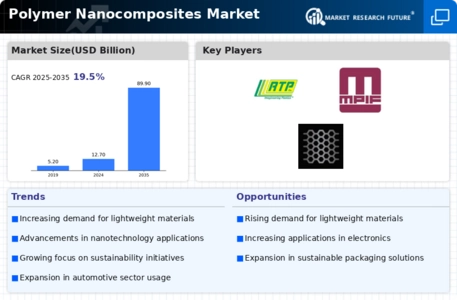

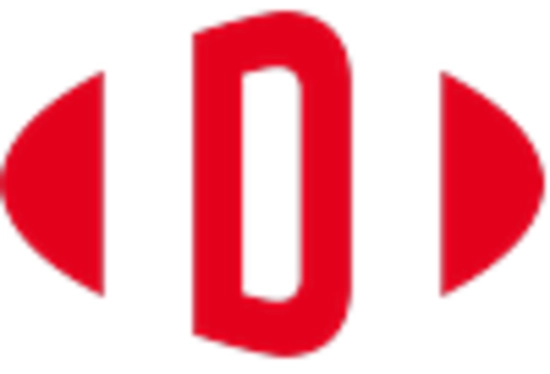

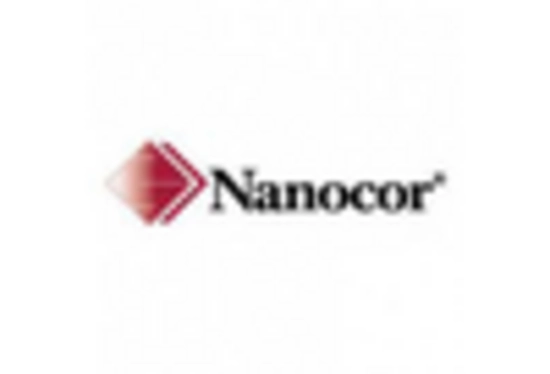
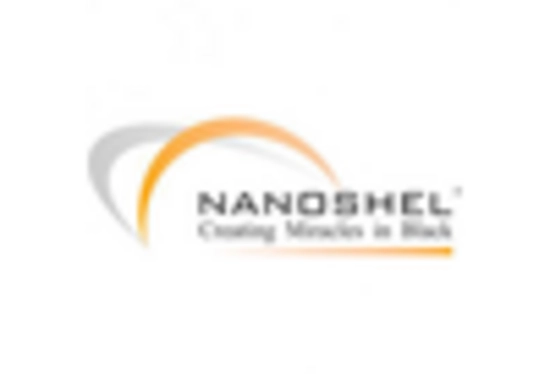
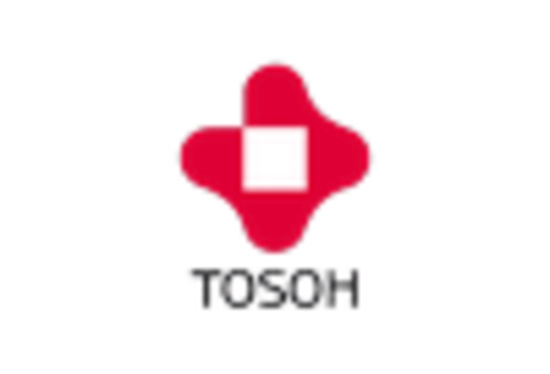

Leave a Comment